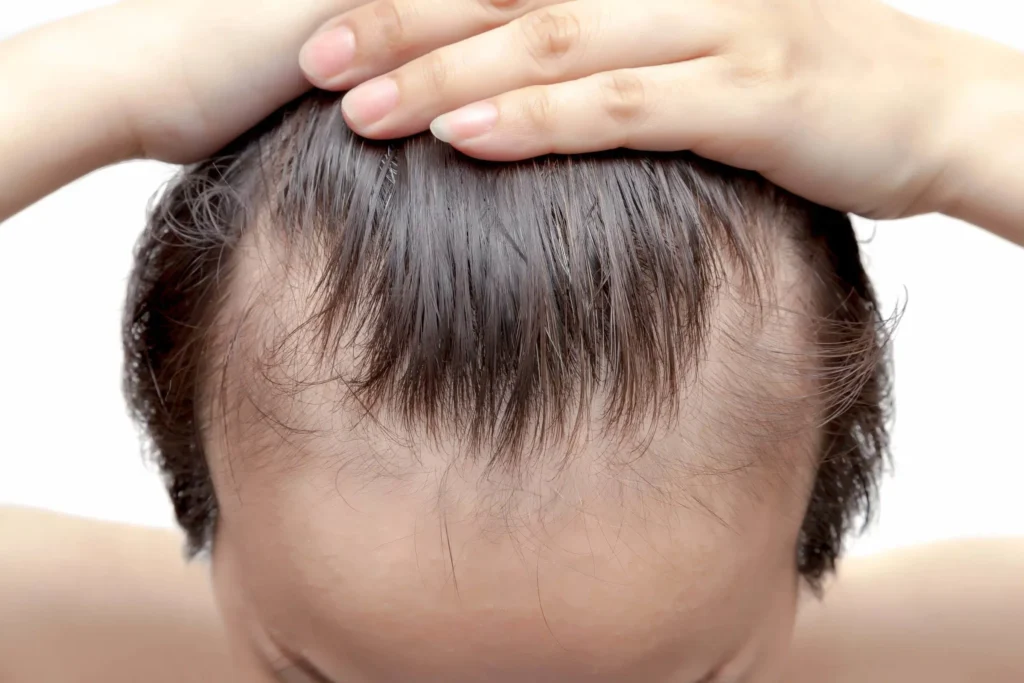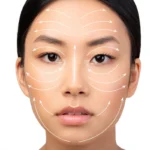Hair Loss

People suffering from hair loss may not fully understand the underlying causes of their condition. Many factors contribute to hair thinning and baldness, including genetics, which often determines whether or not a person will experience this issue.
In this article, we will share the genetic aspects of hair loss so you can understand why it happens, and explore effective strategies for managing the condition.
Genetic factors contributing to hair loss
The most common form of hereditary hair loss is androgenetic alopecia, often referred to as male-pattern baldness or female-pattern baldness. This condition is influenced by multiple genes inherited from both parents. The genes affect the hair growth cycle and the susceptibility of hair follicles to androgens, especially dihydrotestosterone (DHT).
Role of dihydrotestosterone (DHT) in hair follicle miniaturisation
DHT is derived from the male hormone testosterone and is critical to developing
androgenetic alopecia. Hair follicles sensitive to DHT undergo miniaturisation, where the follicles shrink over time. This process leads to shorter and finer hair strands, eventually ceasing hair growth in affected areas.
The enzyme 5-alpha-reductase converts testosterone into DHT. Individuals with higher levels of this enzyme or increased sensitivity to DHT are more likely to experience hair follicle miniaturisation. This hormonal influence explains why androgenetic alopecia is more prevalent in men, as they have higher levels of testosterone and, consequently, DHT.
Inheritance patterns (autosomal dominant)
Androgenetic alopecia follows an autosomal dominant inheritance pattern. This means that inheriting a single gene copy from either parent can predispose an individual to hair loss. However, hormonal changes, age, and overall health can influence the expression of this genetic trait.
While men usually exhibit a more pronounced pattern of hair loss, women can also be affected. Female-pattern baldness usually manifests as thinning of hair spread out across the scalp rather than the distinct receding hairline and bald spots seen in men.
Lifestyle tips
Although genes play a role in hair loss, certain lifestyle improvements can help manage the condition and promote healthier hair. Here are some tips:
- Balanced diet: Consuming a diet with enough vitamins and minerals, such as iron, zinc, and biotin, can support hair health. Foods like leafy greens, nuts, seeds, and lean proteins are beneficial.
- Stress management: Chronic stress can exacerbate hair loss. Practising relaxation techniques like meditation, yoga, and deep breathing can help reduce stress levels.
- Avoid harsh treatments: Limit the use of heat styling tools, chemical treatments, and tight hairstyles that can damage hair and lead to breakage.
- Proper hair care: Use gently formulated shampoos and conditioners suitable for your hair type. Regularly washing your hair and maintaining a clean scalp can prevent issues like dandruff, which can contribute to hair loss.
Professional treatments
Besides managing your hair loss at home, you can consider professional treatments for more targeted solutions. Several treatments can help mitigate hair loss caused by genetics.
Minoxidil
Minoxidil is a common hair loss treatment approved in Singapore for treating hair loss in both men and women. This topical therapy works by stimulating hair follicles, boosting blood flow to the scalp, and extending the hair growth phase. Minoxidil is available in various formulations, including solutions and foams, and must be used consistently to maintain results.
Laser therapy
Low-level laser therapy (LLLT) uses red light to stimulate hair growth. This non-invasive therapy increases blood circulation in the scalp and encourages hair follicles to enter the growth phase. LLLT devices are available for both in-clinic treatments and home use, making them convenient for many individuals.
Hair transplant
Hair transplant surgery involves relocating hair follicles from a donor area, usually the back of the scalp, to areas experiencing hair loss. A popular method is Follicular Unit Extraction (FUE). FUE hair transplant directly extracts individual hair follicles from the scalp and transplants them into a balding area. The result is a new, permanent, and natural-looking hairline.
Hair loss treatment in Singapore
Genetic hair loss might seem inevitable, but understanding its mechanisms opens the door to effective management and treatment. With lifestyle adjustments and professional care, you can combat hair loss and restore your hair’s vitality.
Alaxis Medical & Aesthetic Surgery is a provider of hair loss solutions in Singapore. We assess the underlying cause of your hair loss and develop a customised treatment plan for you. We combine technology with expert care to deliver effective and lasting results for hair loss.
Book Your Consultation with Us!
Learn more about our hair loss treatments and cost.





